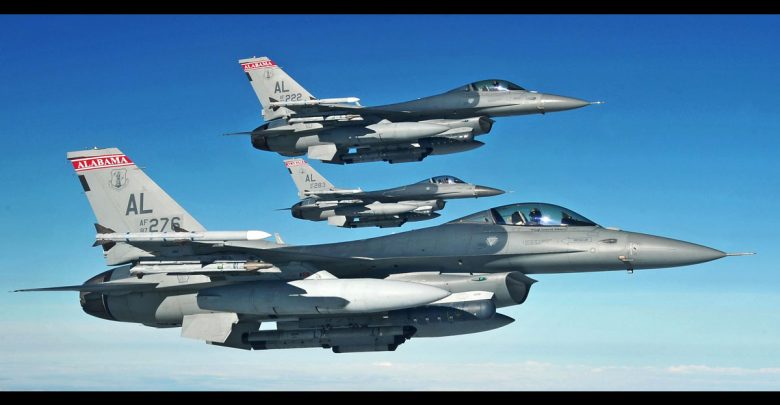
By Josh Bernstein:
There’s a reason restaurants specialize in different types of cuisine. It is so they can perfect one type of food. For example, you wouldn’t order linguine and clams sauce at a Mexican restaurant would you? That would not go very well with your burritos and pico de gallo either. Oh, in that same spirit you probably wouldn't want to eat your meal before it was fully cooked unless of course you enjoy an occasional bout of food poisoning.
These same principles you would think would be applied to building and maintaining our military capabilities as well but unfortunately that has not been the case.
Decades ago, the Pentagon made a fateful decision when it came time to upgrading several military jets in our arsenal. In the past, our military would ask for several different types of weapon platforms, each with their own unique abilities and functions designed to perform certain tasks. That’s why there were so many different types of planes made by different companies all across the country. For example, the F-14's were designed for landing on ships, while the F-15's were designed for dogfights, and before they stopped by the Love Shack the B-52's were used for long range bombing.
However, in the 1990's, our military decided to break with tradition and decided to try to buy a single type of jet which then could be modified for use in many different situations and by many different branches of our military. The results were disastrous right from the start. This concept was akin to investing all your money and resources into a restaurant that promises to provide the best Italian, Mexican, Chinese and French cuisine on the planet. You know that is not possible. Unsurprisingly, what the military tried to do worked out about as well as that restaurant.
For instance, The Air Force wanted a stealth fighter jet that could operate in near complete secrecy with an ability to sneak up on any target without being spotted on radar. However, the panels that were designed to deflect radar waves were much heavier than they should have been. It also limited the types of weapons this particular plane (known as the Joint Strike Fighter, or JSF) could carry. Moreover, The Marine Corps wanted a plane that could carry close-attack style weapons and have the capability of taking off vertically (a jump jet) which requires a very different design than a traditional fighter jet would have.
Furthermore, The Navy needed lighter, faster jets that could not only take off from practically anywhere on land but also land on moving targets like aircraft carriers. But once again, the much heavier JSF (or F-35, as it is also known by) wasn’t well designed for this task.
As Popular Mechanics magazine put it in a comprehensive article on the JSF, “The development of the F-35 has been a mess by any measurement.”
It wasn't just the design of the plane itself that lead to its issues; it was also the roll out process as well. The Pentagon, which will never be accused of spending money wisely, tried to keep the F-35's costs down by building them “concurrently,” which means they were more focused on building more jets for our fleet than they were with testing their performances against previously developed models. Predictably, that didn’t go well either.
The JSF was supposed to be cutting-edge, but that simply meant that much of its technology hadn’t been proven yet outside the lab. Whenever something went wrong or didn’t work, engineers needed to revise the design irregardless of cost and create a new blueprint. In addition, for safety concerns and re-engineering purposes they needed to ground some of the jets that had actually been built and put into flight. It’s similar to recalling an automobile, except far more expensive and disruptive. “By 2013, the cost of retrofitting was put at $1.7 billion,” Popular Mechanics reported. No doubt that’s increased substantially in the years since.
The Pentagon's incessant determination to save money instead of building singular unique capable jets for each branch of our military could perhaps in the end prove even more expensive. A definitive study a few years ago from the RAND Corporation explained that it would have made more sense to develop separate platforms for each branch. “Under none of the plausible conditions analyzed did Joint Strike Fighter Jets have a lower Life Cycle Cost estimate than three notional equivalent single-service programs,” the report said. Moreover, the design requirements of a single program are “a major contributor to the joint acquisition cost-growth premium identified in this cost analysis.”
That’s not surprising. By trying to do it all at once, the Pentagon foisted a weapon system on itself that can’t do anything very well. The F-35 has become like a military cafeteria, serving bad tasting, yet overpriced, food. It’s time for a redesign.
President Trump has promised to rebuild our military and that process is underway. All branches of our Military deserve the best most state of the art weaponry to fight and win potential wars in this century and beyond. I believe in cutting taxes and cutting spending, but never on our military.
Josh Bernstein, is the Amazon TV Host of The Josh Bernstein Show, and the national spokesman for AMAC.





Leave a Reply
Thank you for your response.
Please verify that you are not a robot.